
Last week, Canada Steamship Lines’ latest diesel-electric self-unloading vessel – the MV Nukumi – entered service with Windsor Salt. In order to reduce the vessel’s greenhouse gas emissions by 25% and air pollutants (substances that have a detrimental effect on living organisms) by 80%, the MV Nukumi was fitted with a twin-fin diesel-electric propulsion system. According to the International Council on Clean Transportation, maritime shipping could account for 17% of total emissions by 2050. For several years, the IMO (the International Maritime Organization) has been tightening the requirements for international shipping in order to achieve its goal of reducing the sector’s carbon intensity by 40% by 2030. In response, several initiatives and technologies, including fuels, are being developed to comply with the new rules that are gradually coming into force.
Electricity-based solutions
Solutions based on electric power (batteries, motor) have been widely developed over the last few years, such as the Yara Birkeland, the first autonomous battery-powered container ship that set sail last year in Norway to transport 120 containers over 7.5 nautical miles. Startups are flocking to the sector, with total funding of more than $360 million. Fleetzero, which builds battery-electric cargo ships, has already raised $3.5 million. The startup is increasing the efficiency of existing diesel ships by converting them into battery-electric vessels and is pioneering innovation with the MVE7 – an electric ship designed for transpacific cargo delivery.
However, for the time being, due to energy storage constraints, the electric solution can only be relevant for niche use, such as ferries with fairly short and stable routes, multiple recharging times at the quayside, or for coastal and river transport, and not for long-distance ships. Other alternatives seem more appropriate for maritime transport and it is likely that a transition to hybrid engines will be necessary to reduce carbon emissions in the sector.
Other non-combustion engine solutions
Several technologies show that there are alternatives to power generation by internal combustion engines, but they are not suitable for all uses, including long-distance shipping.
- Wind: Hybrid electric propulsion combined with renewable energies such as wind has the best total carbon footprint, especially for small ships. The Nantes-based start-up Neoline has the ambition to develop commercial lines operated with ships designed to use wind. Scheduled to enter service in 2024, the first Neoliner will be a 136-meter long, 24-meter wide ship capable of carrying 5,000 tonnes of cargo. The sails, combined with a reduction in commercial speed will reduce energy requirements by 90% compared to a traditional cargo ship of the same size.
- Hydrogen: Hydrogen stored onboard powers a fuel cell that produces the electricity needed for propulsion. While this technology meets the objectives of reducing CO2 emissions, it nevertheless shifts the problem to the production of hydrogen, 95% of which is currently produced from fossil fuels on land (Futura Planète). Moreover, the stability of onboard storage still raises technical reservations. The startup Boundary Layer Technologies combines the known physics of hydrofoil with patented designs to build 160-container ships that run on hydrogen. The ARGO cargo ship is powered by liquid H2 and travels at twice the speed of conventional containerships. It uses direct routes to reduce overall transit times and be competitive with air freight.
New fuels for internal combustion engines
For the next 30 years, the predominance of internal combustion engines for ship propulsion remains the most credible scenario. But it is possible to improve the environmental balance by changing the fuels.
- MGO – Maritime Gas Oil: The aim is to integrate a growing proportion of fuels from agricultural production, mainly ethyl, or recycled petroleum products such as waste oils or recycled vegetable oils. However, production is costly if not subsidized (collection, reprocessing) and the impact on emissions remains low. On the other hand, in the case of fuels derived from agricultural production, the ecological cost is highly controversial. The startup Mash Makes was a finalist of the 2022 World-Changing Ideas Awards. It specializes in converting various agricultural residues into carbon-negative fuel products that meet the necessary international maritime standards.
- Ammonia: Compared to hydrogen, ammonia has a higher energy density and is more available in ports. In addition, the production cost per tonne is very low, and this solution can meet the targets set by the IMO. However, its mass production as a fuel has been ruled out until now because of its toxicity and low flammability. It is massively manufactured from fossil fuels, which also shifts the environmental problem. The most promising combustion tests for this technology are based on a combination of 70% ammonia and 30% MGO. Brooklyn-based startup Amogy is developing an ammonia power system for ships and heavy-duty road transportation. The technology uses liquid ammonia and converts it into hydrogen gas, which then runs through a fuel cell. The one-year-old company says it plans to launch a small demonstration vessel by early 2023, along with large road vehicles.
- Methanol: Methanol is a promising alternative fuel for reducing emissions and improving the environmental performance of shipping. It contains no sulfur and, because it is a clean-burning alcohol, emissions of NOx and particulate matter from combustion are low. However, the use of methanol requires certain levels of safety and engine adaptation as well as increased bunkering capacity on board.
- LNG – Liquefied natural gas – coupled with MGO: LNG can drastically reduce combustion emissions, including carbon emissions, which is its great advantage. Moreover, it requires only minor modifications to current propulsion technologies, which means that emission reduction targets can be met quickly and with limited investment. However, this technology relies soleyl on fossil resources.
Large groups are also targeting this segment. In August 2021, Maersk ordered eight green methanol-fuelled ocean-going vessels for delivery from the first quarter of 2024. They have also invested in WasteFuel, another Californian start-up making greener biomethanol from waste. Through the Ammonia 2-4 project, a strong consortium of shipping players including Wärtsilä, C-Job, DNV, and MSC aims to develop demonstrators of two- and four-stroke marine engines running on ammonia.
Finally, numerous alternatives are being developed, notably under pressure from the IMO and numerous supra-national bodies, including the Brussels Commission. While for small ships and routes, 100% electric or renewable energy-based alternatives are being developed, for freight transport, hybrid engines seem more feasible for the coming years. But questions remain: batteries have a limited life expectancy and their production requires many critical materials. The overall carbon impact of these new fuels is therefore far from zero.
2 Key Figures
Global marine fuel market is expected to reach a total market size of $156 billion in 2025.
Research And Markets
+80 startups manufacturing electric ships
Traxcn
3 startups to draw inspiration from
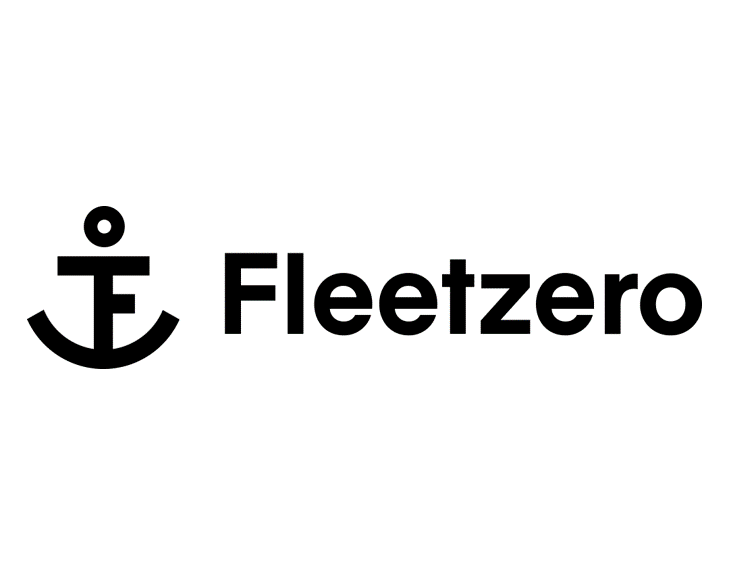
Fleetzero
The startup is building battery-electric ships that will sail between major neighbouring ports. The plans call for unloading containers of cargo and nearly depleted batteries, and then loading containers of replacement cargo and freshly recharged batteries. This method would allow the ships to carry a relatively small fleet of batteries.
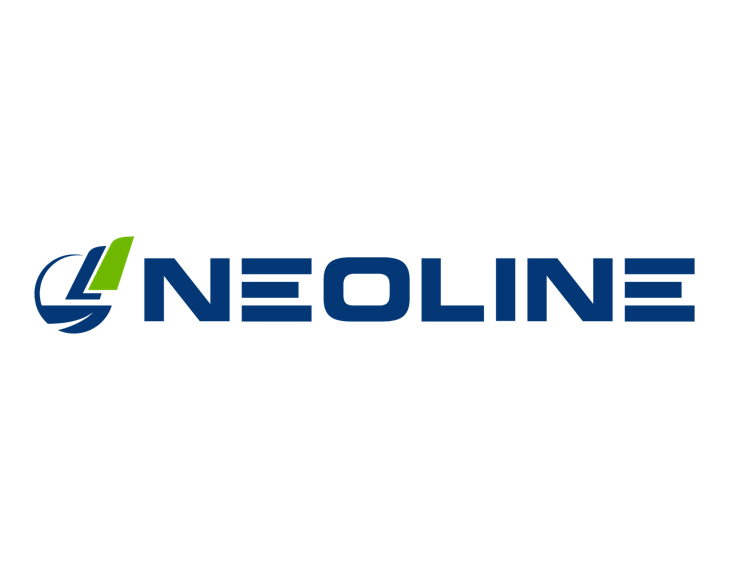
Neoline
The startup is working on decarbonized merchant shipping, powered mainly by sail. The first Neoliner will be capable of carrying 5,000 tonnes of cargo. The sails, combined with a reduction in commercial speed will reduce energy requirements by 90% compared to a traditional cargo ship of the same size.

Mash Makes
The startup is specialized in the environmentally friendly conversion of various agricultural residues into fuel products in accordance with international standards. The biofuel is compliant in a B11 blend with DMA (or MGO) directly from the pyrolysis machine. The fuel has been validated at Alfa Laval’s Marine Test and Training Center.
Interested in a startup landscape or in an insights report?
Please fill out our contact form so that we can get back to you very quickly with our product offer.
Want to subscribe to our 123Fab?
Fill out our form to receive the latest insights into your inbox.
123Fab #85
1 topic, 2 key figures, 3 startups to draw inspiration from
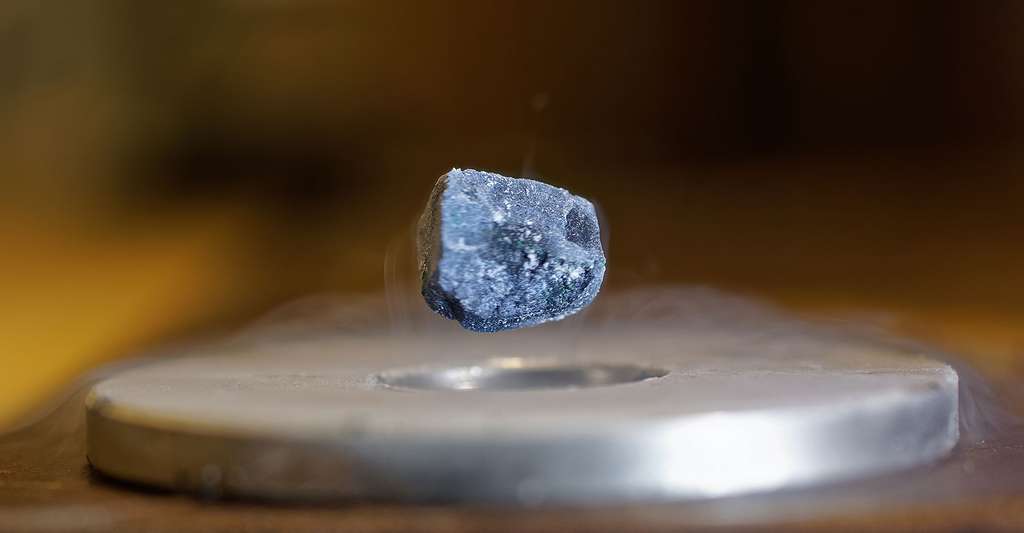
Last week, a team of Dutch researchers succeeded in developing a unidirectional superconductor. This approach could lead to a substitute for semiconductors and develop computers 300 to 400 times faster than those of today. More than just faster information transmission, the use of superconductors instead of ordinary semiconductors could save up to 10% of all Western energy reserves according to the Netherlands Research Council (NWO). They are also very valuable for the future in solving energy efficiency issues.
Superconductivity is a phenomenon of zero electrical resistance and expulsion of magnetic fields that occurs in certain materials when they are cooled below their critical temperature. In other words, this creates very strong magnetic fields and ensures that no energy is lost when superconducting materials carry or produce energy. There are two types of superconductors: Low-temperature superconductors (LTS) are those whose critical temperature is below -196.2°C and high-temperature superconductors (HTS) are those whose critical temperature is above -196.2°C. LTS critical temperature is relatively close to absolute zero, which is a problem because materials have to be cooled with expensive technologies such as liquid helium cooling. Its scope is therefore rather limited when a large quantity of material needs to be cooled. On the contrary, HTS have critical temperatures above the liquefaction temperature of nitrogen. They can therefore be more easily cooled with the latter (LN2), as is already done in other sectors such as IT or food processing.
There are many diverse applications for superconductors. To begin with, for the energy sector, the use of superconductors has great potential along the value chain.
- Conversion: High-temperature superconducting generators or engines are lighter and more compact than traditional ones and allow high efficiency.
- Transmission: An average of 5% of the electricity consumed is lost during transport. Thanks to superconducting materials, and their resistance-free current conduction, higher energy yields resulting from reduced energy losses in are achieved.
- Network security: Superconducting fault current limiters (FCLs) act as protective devices during power transmission, inserting an impedance into a conductor when there is a sudden surge of current on the transmission networks.
- Storage: Superconducting Magnetic Energy Storage (SMES) stores electricity from the grid in the magnetic field of a coil consisting of a superconducting wire with zero energy losses.
Other applications also exist, notably in health and transport and several technologies use the ability of superconductors to generate large magnetic fields. Indeed, superconductivity has played a key role in medical imaging as it is at the heart of MRI technology, providing intense, stable, and uniform magnetic fields. Superconductors can also replace conventional electromagnets in magnetic levitation trains (maglev), i.e. monorail trains that use magnetic forces rail to avoid energy losses due to friction with the rail. Last year, Chinese engineers presented a train of this type capable of traveling at 620 km/h.
However, several challenges remain to make superconductors the key to energy efficiency. First, superconducting wires and films are still expensive compared to conventional electrical cables because their manufacturing process is very complex. Indeed, HTS are ceramics, therefore difficult to manufacture and LTS are metals, easy to manufacture but difficult to cool. Moreover, the cooling infrastructure needed to exploit the capacities of superconductors is also expensive (even with liquid nitrogen for HTS).
Although the sector is not yet very mature, several large companies and start-ups are developing initiatives to overcome these limitations and benefit from this promising technology. Late last year, Nexans, a leading manufacturer of superconductor cables, installed and commissioned its technology for power grid system provider American Superconductor (AMSC) for Chicago’s Resilient Electric Grid project. In the same way, the startup SuperNode is developing superconducting cables to provide a medium-voltage direct current (MVDC) transmission system. One use case for the startup is to connect an offshore wind farm to the grid using superconductors as the mechanism of energy transfer. They make it possible to place renewable energy sources at the most strategic location without worrying about transporting the energy, since it is done without loss. Another example is the British company Epoch Wires, which manufactures patented superconducting wire. Their production process creates low-cost, durable magnesium di-boride superconducting wires that have the potential to provide superconductivity at temperatures of 40K (-233°C) for magnetic resonance imaging and power applications. For the cooling process, the startup Veir raised $10 million in funding last year to further develop a cooling system for high voltage superconducting transmission lines.
The prospects for superconductors, studied since the 1980s, are significant and very promising. Its benefits could revolutionize the energy industry. Indeed, having a non-resistive conductor would save a huge amount of energy on the existing grid installation. They could also contribute to the development of remote renewable energy sources by ensuring lossless energy transmission. However, deployments remain limited today due to the cost of the infrastructure and the complexity of the large scale.
2 Key Figures
The superconductors market is expected to reach $8.78B in 2025 at a CAGR of 13.08%
The Business Research Company
+$100M raised in the last six years in the superconductor market
Traxcn
3 startups to draw inspiration from

SuperNode
The Irish startup designs and delivers superconducting connection systems to connect renewable generation and increase grid interconnection in mature markets. It manufactures superconductor cables that can carry huge amounts of power in a much smaller surface area than conventional cables and require significantly less infrastructure, materials, and space.

Epoch Wires
The UK startup is specializing in manufacturing superconductor wires using environmentally friendly, abundant, and cheap material, namely Magnesium Diboride (MgB2). The company’s patent-pending technology offers high capacity production of infinitely long wire at one of the lowest market prices.

Veir
The US start-up has developed a passive evaporative cryocooling solution that enables reliable and cost-effective transmission of superconducting cables over very long distances. It provides 20 times more cooling power per kilogram of nitrogen flow than mechanical subcooling.
Interested in a startup landscape or in an insights report?
Please fill out our contact form so that we can get back to you very quickly with our product offer.
Want to subscribe to our 123Fab?
Fill out our form to receive the latest insights into your inbox.
123Fab #79
1 topic, 2 key figures, 3 startups to draw inspiration from
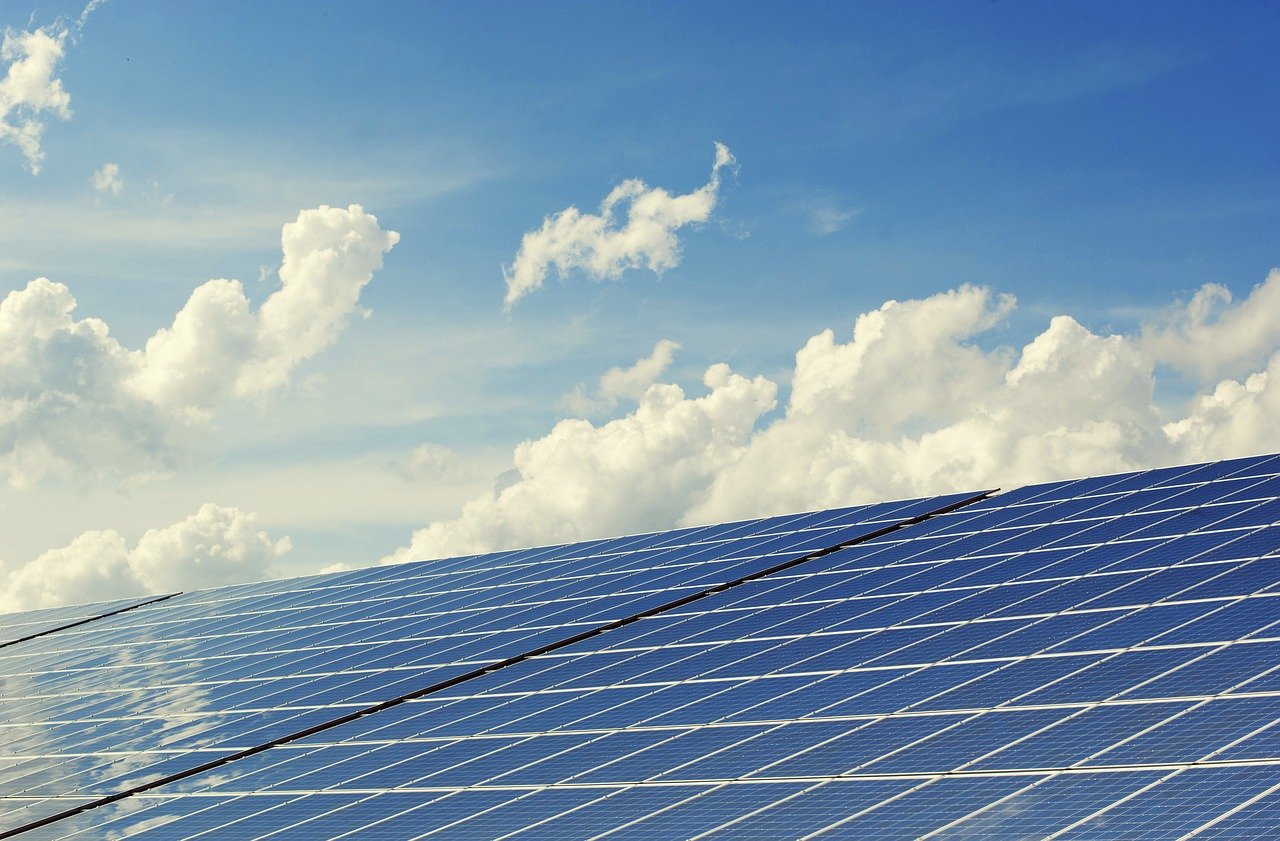
In early March, the price of natural gas in Europe hit an all-time high due to tensions between Ukraine and Russia, reaching €345 per megawatt-hour. In response, the EU proposed the REPowerEU plan, to increase the resilience of its energy system, and plans to cut imports from Russia by two-thirds this year. Alternative energy sources like solar, hydrogen and next-generation nuclear are in the spotlight. To that extent, solar is seen as one of the fastest replacements for Russia’s supply. The Commission estimates that by accelerating the rollout of rooftop solar photovoltaic systems to 15TWh this year, the EU could save an additional 2.5 billion cubic meters (bcm) of gas (155 bcm of gas was imported from Russia in 2021). Overall, solar energy seems to be an essential way for Europe to wean itself off Russian gas and it has become a priority for governments in a very short time. Start-ups and players in the sector have understood this well.
Solar energy is already well represented in the European energy mix, reaching a record 10% of total electricity last summer with a 34% increase in solar PV capacity compared to 2020. It is particularly popular with companies and individuals for its profitability. In 2020, 16% of the French photovoltaic park was composed of residential roofs, with a power of less than 9 kWp. Depending on the technology of the panels used, their power, the geographical area of implantation, the orientation, the inclination or the materials of the solar kit, the yield of the photovoltaic panels can vary from 6 to 24%. This puts them slightly below wind turbine efficiencies, which vary from 20 to 35%. The issue of efficiency is closely related to the recurring questions about the reliability of solar panels. Indeed, any change in the availability and intensity of sunlight has an impact. Technology has addressed this issue with battery storage options for off-grid systems. By storing excess solar energy in batteries, energy can continue to be distributed when there is no sun to power the panels.
Startups have played a key role in this sector in providing answers to the various limitations of solar panels, especially from a BtoC perspective. This is the case of Pika Energy, acquired in 2019 by Generac, which offers a complete platform dedicated to energy management and storage. The startup ensures an efficient flow of energy between the smart battery, the solar cells and the building, to produce energy continuously. Another well-known limitation to the efficiency of photovoltaics is the dust and dirt that can accumulate on the solar panels. In response to this, the startup Pellucere has developed the MoreSun product, which adds an anti-reflection and anti-fouling silica screen to solar panels. Field tests of the startup’s solution have shown energy gains ranging from 3.5% to 4.1%. Another startup, Inti-Tech has developed semi-autonomous and autonomous cleaning systems that clean solar farms without the need for infrastructure changes, with absolutely no water and fewer people than traditional cleaning methods.
The growing need for solar energy is also leading to increased fundraising in the sector, notably through the creation of funds dedicated to the transition from fossil fuels to clean energy, such as Gaia Impact Fund or Energy Transition Ventures. Germany-based company Enpal has raised the most venture capital so far, following a €150 million investment by Japanese venture capital fund SoftBank six months ago. Its BtoC solution is full stack: it sources its solar panels, modules, batteries and inverters directly from China, employs all the installers and has also created its own software. Another startup, Otovo, raised €30m in February. Its solution is a kind of marketplace: Otovo does not install its own solar panels but instead uses local contractors.
It seems that the crisis in Ukraine has been an accelerator for renewable energies, and in particular solar energy. Green energy has jumped really quickly from the ESG budget to the national security budget. This is especially true for countries that were highly dependent on eastern energy, such as Germany, where total solar PV capacity reached 59 gigawatts in 2021 and is expected to rise to 200 gigawatts in 2030. This opens many doors for players in the sector, especially in the installation and recycling of these solar panels, which will become a central issue for the next decade.
2 Key Figures
The solar energy market is expected to reach $200 billion by 2026, growing at a CAGR of 20% between 2020 and 2026
It was estimated to be worth $50 billion in 2019 – GlobeNewswire
+1,300 Funding Rounds in solar energy
In the last 10 years – Tracxn 2021
3 startups to draw inspiration from

Inti-Tech
The chilean startup has developed an electro-mechanic device to make more efficient the operation of solar photovoltaic plants. It offers an automatic, high-frequency and eco-friendly cleaning service to stop the efficiency loss caused by dirt over the surface of PV modules. One robot per array of panels is permanently installed to clean with no human intervention.

Enpal
The German startup uses AI for provisioning and installing solar panels. The whole provisioning part of the installation is done remotely with AI-based algorithm. An app allows consumers to measure their energy gathering, storage and consumption, and to pay for services. They pay rent on the solar panels and for the all-round service.
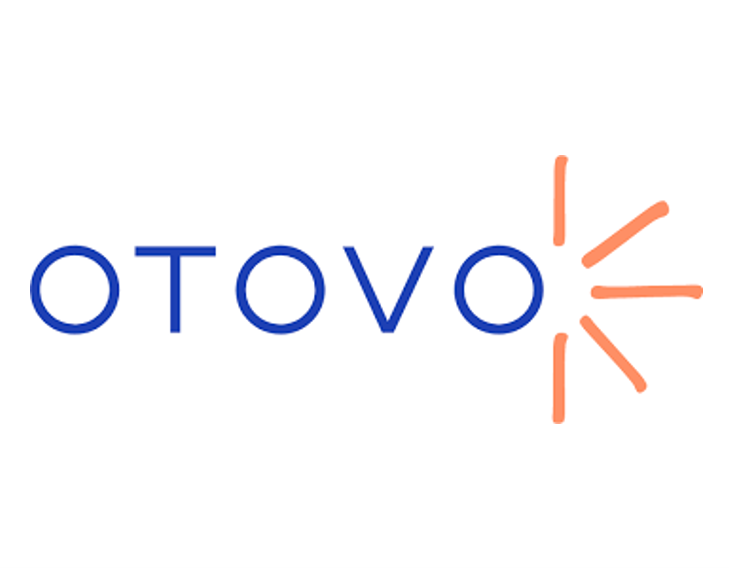
Otovo
The Norwegian startup connects solar energy installers with homeowners who want to put solar panels on their roof. The solution analyses the potential of any home and finds the best price and installer for customers based on an automatic bidding process between available installers. Otovo has more than 12,000 customers and expects to add 10,000 new customers in 2022.
Interested in a startup landscape or in an insights report?
Please fill out our contact form so that we can get back to you very quickly with our product offer.
Want to subscribe to our 123Fab?
Fill out our form to receive the latest insights into your inbox.
123Fab #72
1 topic, 2 key figures, 3 startups to draw inspiration from
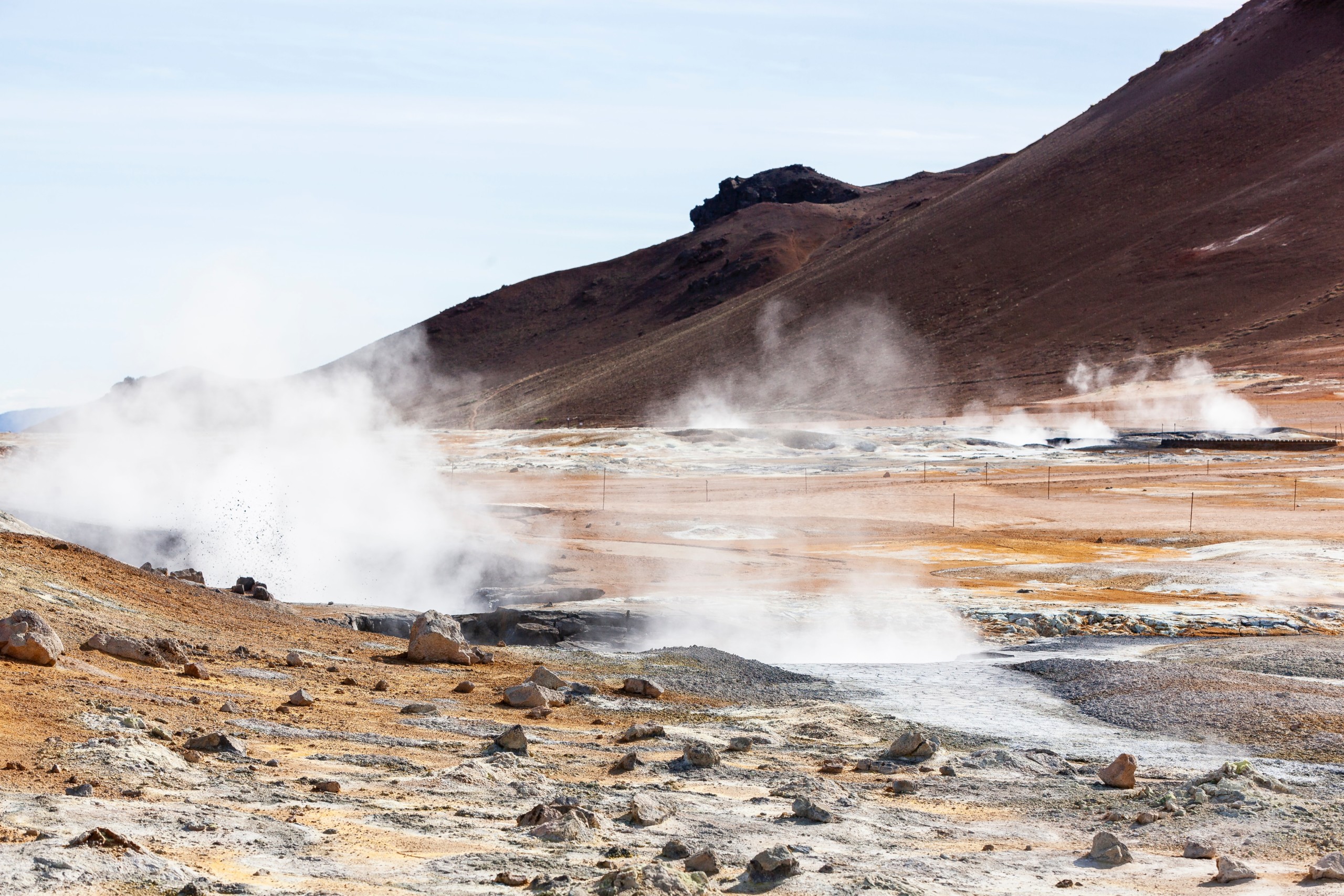
As concerns about climate change grow and energy use is at an all-time high, the need for an affordable, scalable, and low emission electricity source is clear. And while geothermal energy might not be the first source that comes to mind when talking about renewable energy, its potential is huge and startups and investors are investing in the field.
Producing electricity using geothermal energy is a straightforward process: the lower layers of the earth are hot and some of them contain pools of water at high temperature and pressure. To access as much of this water as possible, a fracturing step is used to improve the permeability of the surrounding rocks, called “fracking”. The water is pumped out and turned into steam when it reaches the surface. The steam passes through a turbine to produce electricity. Once it passes through the turbine, the pressure drops and the steam turns back into water, which is sent back underground.
One of the main drawbacks of this technique is that these pools are often very deep underground and the drilling of the well is exponentially expensive with the depth, but some startups are tackling this problem: Strada has developed a patented “water hammer” technology, a frac-free drilling method that they claim can reduce time and cost by up to 70% compared to conventional technology. Eden Geotech provides electro-hydraulic fracturing technology that enhances geothermal well production by increasing the liquid flow within the well. One of its advantages is that the electricity used for fracking can be produced by the geothermal power plant itself, lowering the ecological impact of the process. Eavor, on the other hand, offers a geothermal solution that does not require fracking with its Eavor-loop system. It harvests energy using its proprietary fluid flowing inside a chain of lateral wells dug several kilometers underground.
Another obstacle to the widespread adoption of geothermal energy is that it is location-dependent, as pockets of very hot, deep water are not found everywhere. Other technologies focus on “low enthalpy” geothermal wells, where the liquid temperature reaches 70-90°C, which are more abundant and closer to the earth’s surface. One way of producing power using these wells is through an Organic Rankine Cycle (ORC), which involves bringing hot water into contact with another liquid that has a lower boiling point and using the steam produced to generate electricity. Greenstorc has developed a proprietary fluid that evaporates at 50°C and creates 250 times more steam than water, thus reducing the energy loss of the conversion. Climeon produces modules using the ORC principle that can operate between with a hot source of 80 to 120°C and can be associated in parallel and in series, making it scalable to a wide range of flows and power generation needs.
The innovative geothermal energy production technology has attracted the attention of larger corporations: BP and Chevron led Eavor’s last year’s funding round. Two years ago, Climeon successfully installed its technology on virgin voyage’s first ship, using the waste heat from cooling systems as a heat source. Their technology is to be installed on Virgin’s first 4 ships.
In short, geothermal energy can be a viable and reliable energy source, as evidenced by Iceland, where 25% of the electricity is produced using geothermal energy. Nonetheless, these applications remain geographically constrained and are very expensive, but work continues to expand their use in less optimal conditions.
2 Key Figures
The geothermal energy market is expected to reach $6.8bn by 2026
The global geothermal energy market reached $4.6 bn in 2018 and is expected to grow at a CAGR of 5% over the period 2019-2026 – Allied Market Research
+350 funded companies in geothermal energy
registered by Tracxn
3 startups to draw inspiration from
This week, we identified three startups that we can draw inspiration from: Strada, Eden Geotech and Eavor.

Strada
The UK-based company provides onshore geothermal drill rig technology and specializes in providing deep geothermal well construction and completion services with access to patented drilling rigs and fluid percussion drilling methods.
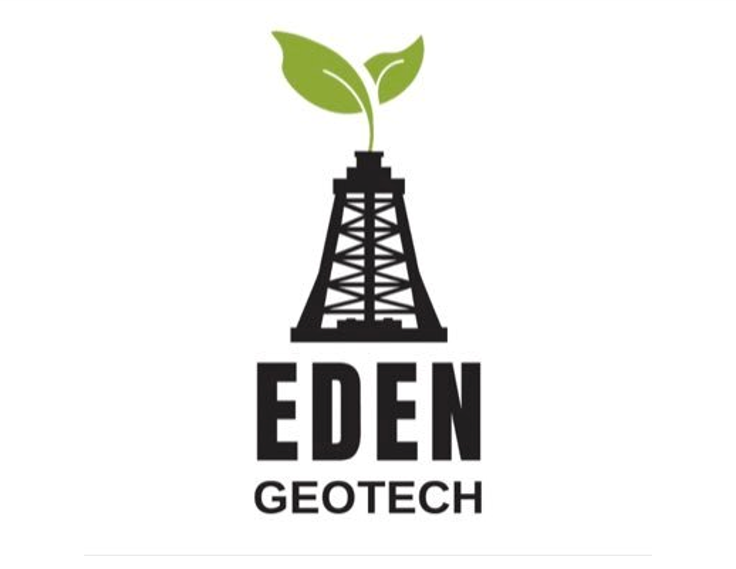
Eden Geotech
Eden Geotech provides reservoir stimulation technology intended to enhance oil, gas and geothermal productivity. The company has developed water-less and injection-free technology and solutions to change the petrophysical properties of rock formation, create micro-fractures and increase permeability.

Eavor
Based in Canada, climeon developed a power generation technology designed to mitigate or eliminate the issues that have hindered traditional geothermal alternatives. The company’s technology circulates a benign working fluid that is completely isolated from the environment in a closed-loop and collects heat from the natural geothermal gradient of the Earth.
Interested in a startup landscape or in an insights report?
Please fill out our contact form so that we can get back to you very quickly with our product offer.
Want to subscribe to our 123Fab?
Fill out our form to receive the latest insights into your inbox.
123Fab #70
1 topic, 2 key figures, 3 startups to draw inspiration from

As the world is looking for solutions to curb CO2 emissions and mitigate climate change, Carbon Capture, Utilization and Storage (CCUS) technologies have raised hope, especially for heavy emitters in the Oil & Gas or manufacturing sectors. The principle is simple: CO2 produced when burning fossil fuel is captured before it enters the atmosphere, and either safely stored or used as feedstock to make other products. The major obstacle regarding this technology is its cost. The capture step itself is costly, both financially and energetically, especially for low CO2 concentration flows. For carbon storage, the captured CO2 needs to be compressed and shipped to its destination and stored. All of these steps are also costly and energy-intensive, resulting in relatively low adoption. Carbon reuse solutions attempt to reduce the overall cost of the process by using CO2 to produce valuable products that can be sold.
There are a wide variety of solutions to valorize captured CO2: from producing carbon fibers using algae to producing building materials such as cement, concrete, or insulation foam, the possibilities are numerous. One utilization scheme seems to have caught the attention of investors and entrepreneurs: the production of carbon-neutral fuel using CO2.
Some startups are focusing on reducing emissions in the transportation sector by producing an alternative fuel from captured CO2. Caphenia produces jet fuel using CO2 and methane as feedstock through a plasma process. Their process could reduce CO2 emissions by 92% compared to fossil fuel consumption. Other startups like Nordic Electrofuel produce it using CO2 and hydrogen produced from water electrolysis using renewable electricity. CERT systems has developed catalysts for electrodes used in electrolyzers to enhance the conversion rate of their CO2 to fuel electrochemical conversion technology.
Methanol is also an attractive alternative fuel that can be used to power cars and ships. Liquid wind and Carbon Recycling International are using CO2 and hydrogen to produce renewable methanol for maritime and road transport. Methanol has been proven to be a viable fuel for ships, and if mixed with petrol, it could also be used for cars, reducing the footprint of road transport as well. In addition, it is a widely used feedstock for the production of plastics, plywood, and synthetic fibers. The use of renewable methanol could also reduce emissions from the chemical industry.
CO2-based fuels are attracting the attention of large companies and partnerships are booming. Last month, Eramet signed a partnership agreement with Nordic Electrofuel to use the CO2 produced in Eramet’s furnace to produce kerosene. Carbon Recycling International joined forces with Johnson Matthey for catalyst supply in CRI’s methanol plants. Earlier this year, Siemens Energy partnered with Liquid Wind. Siemens will provide large electrolyzers that will produce hydrogen for liquid wind’s process.
While alternative fuels seem to be a good solution for decarbonizing the transportation industry, they have one major drawback: all these processes are very energy-intensive. Hydrogen production, which is mostly done through water electrolysis, and plasma technology both consume large amounts of electricity. These processes could use renewable energy, but it is not easy to fund such a large amount and, depending on the energy mix of the available electricity, the ecological impact varies greatly by location. These costs add to the CO2 capture cost, as the removal of CO2 from air or flue gas is very energy-intensive, lowering the ecological benefits of the process. More than that, when this fuel will be consumed, the captured CO2 is released into the atmosphere. The ecological outcome is not strictly zero as the CO2 produced in the first place is eventually released, it simply adds another step in the CO2 use cycle. Although alternative fuels appear to be crucial for lowering emissions of the transportation sector, captured industrial emissions remain untouched by the process, and reducing the number of travels remains the most efficient way to cut down emissions in the transport industry.
2 Key Figures
The global CCUS market is expected to reach $2.97 bn by 2025
The global CCUS market was estimated at $1.3 billion in 2020 and is expected to reach $2.97 billion by 2025, at a CAGR of 19.6% according to PR Newswire
20+ CO2 to fuel startups
registered by Tracxn since 2015
3 startups to draw inspiration from
This week, we identified three startups that we can draw inspiration from: Nordic Electrofuel, CERT systems and Carbon Recycling International.
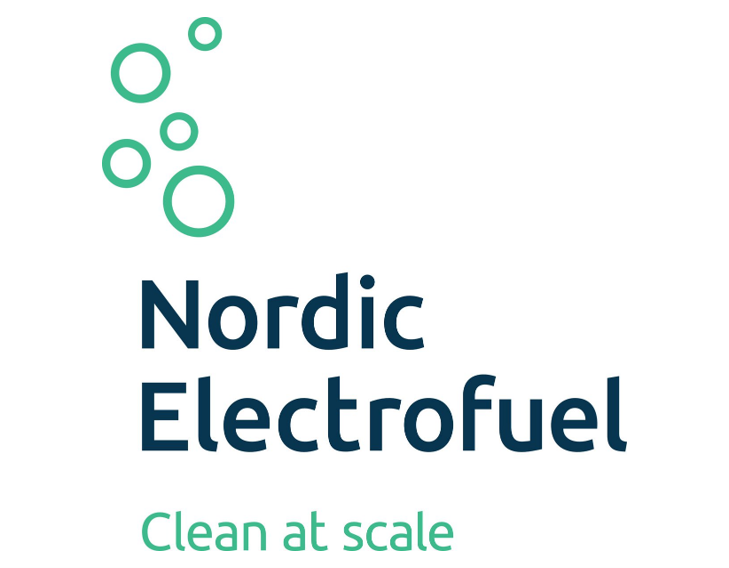
Nordic Electrofuel
Producer of carbon-neutral, synthetic fuels and other fossil replacement products intended to offer renewable electrical energy to the transport sector. The company specializes in generating synthetic gas by separating CO and H2 gas through electrolysis and offers solutions to distribute and store stranded electrical energy and the conversion of renewable electric energy into liquid e-fuels.
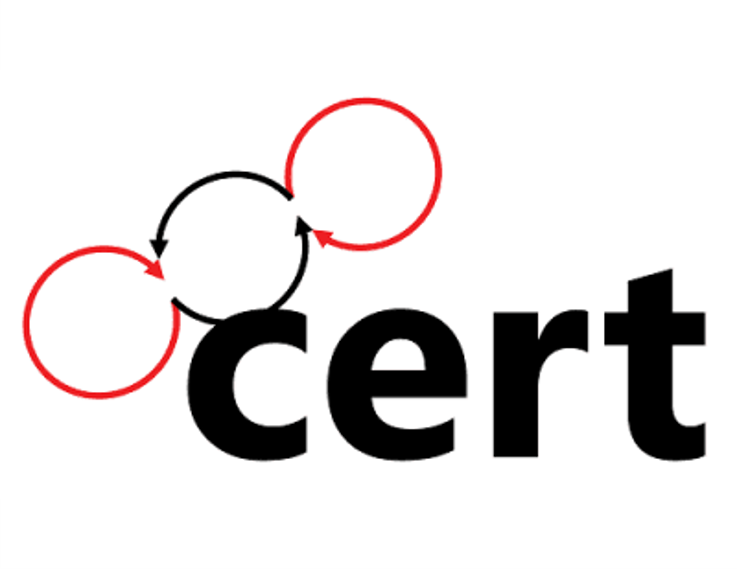
CERT Systems
CERT Systems is a Toronto-based startup that develop a CO2 utilization system intended to catalyze the closure of the carbon cycle. The company’s system utilizes membrane electrode assembly (MEA) electrochemical cells and converts carbon dioxide into renewable fuels and chemical feedstocks using only water and electricity.
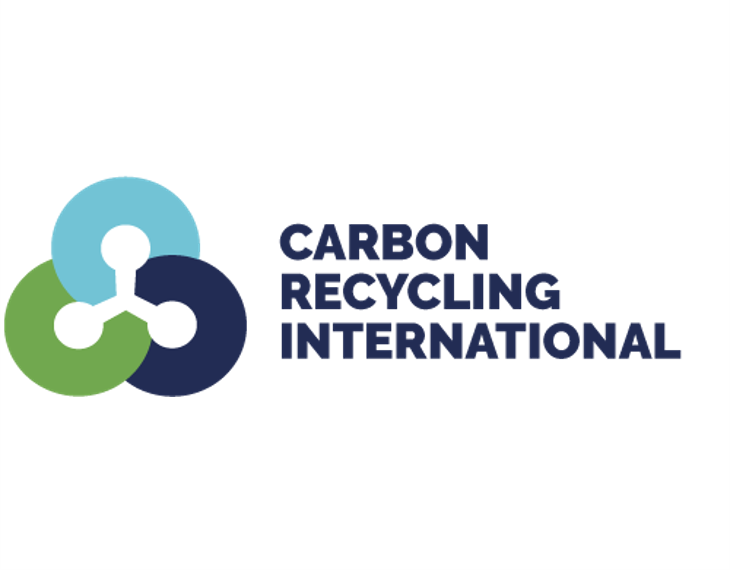
Carbon Recycling International
Carbon Recycling International produce renewable methanol intended to enhance resource efficiency by carbon recycling. Their renewable methanol is produced from carbon dioxide, hydrogen and electricity for energy storage, fuel applications and efficiency enhancement.
Interested in a startup landscape or in an insights report?
Please fill out our contact form so that we can get back to you very quickly with our product offer.
Want to subscribe to our 123Fab?
Fill out our form to receive the latest insights into your inbox.
123Fab #69
1 topic, 2 key figures, 3 startups to draw inspiration from

According to the International Energy Agency’s “Net Zero by 2050” report, the world will need 2,600 GW of hydropower capacity by mid-century to have a chance of keeping the global temperature rise below 1.5 degrees Celsius. In other words, we would need to build the same amount of hydropower capacity in the next 30 years as we did in the previous 100.
Hydropower is now the leading renewable source and the third largest source of electricity production in the world (15.8% in 2018) behind coal (38%) and gas (23.2%). Over the last 20 years, total hydropower capacity has increased by 70% globally, but its share of total generation has remained stable due to the growth of wind, solar PV, coal and natural gas. Hydropower is the harnessing of energy from a flow of water by means of a turbine connected to a generator, turning it into electricity. Most hydropower plants store water in a dam, which is controlled by a valve to measure the amount of water flowing. More recently, new uses of water as an energy producer have emerged, including the use of seas and oceans for tidal or wave energy.
Emerging and developing economies have led the global hydropower growth since the 1970s, primarily through public sector investment in large-scale plants. Throughout the life cycle of a power plant, hydropower offers great advantages, notably some of the lowest greenhouse gas emissions per unit of energy generated. Moreover, security and flexibility are increased with this mode of electricity production. Power plants can generally ramp up and down their electricity production very quickly, allowing them to adapt to variations in demand or to offset fluctuations in the supply of other sources of electricity. Today, hydropower plants account for almost 30% of the world’s flexible electricity supply capacity. It therefore appears that the role of renewable energy will become increasingly important over the next few decades, both as a low-carbon provider of electricity and to support the huge growth in wind and solar power needed to limit global warming.
In advanced economies, the share of hydropower in electricity generation has been declining and plants are ageing. The business case for hydropower plants has deteriorated due to high infrastructure costs and lack of certainty about long-term revenues. There are also real challenges related to complex permitting procedures, environmental and social acceptance, and long construction periods. In China, the construction of the Three Gorges Dam, which began in 1994, displaced 1.4 million people and has reportedly caused numerous landslides and earthquakes since. Current power plants are also ageing: in North America, the average hydropower plant is nearly 50 years old; in Europe, the average is 45 years old. There is a real need for modernization but also for updated sustainability standards and measures to minimise risk and reduce project delivery times.
In response, governments are stepping up to provide funding and new innovations are emerging. On November 5th, the U.S. House of Representatives passed the more than $1.2 trillion Infrastructure Investment and Jobs Act, which includes over $900M in waterpower incentives for new and existing hydropower, pumped storage, and marine energy. Several startups also have innovated in the face of complex infrastructure development procedures and heavy budget requirements. For example, Natel Energy uses pre-existing facilities and discontinue dam building to make hydropower less costly. It also developed a turbine that requires less cement and steel and which is safer for aquatic life. Dutch startup Blade Runner Energy offers a scalable micro-hydro solution which harnesses the energy of the natural flow of water without needing to build a dam. Others use the power of water differently, especially to avoid the social and environmental problems caused by dams. This is the case of Hace, which is developing a patented process that takes advantage of the immense reserve of wave energy to produce electricity with integrated energy stations. Another example is the US-based startup Big Moon, which is developing a technology to harness tidal energy without installing anything on the ocean floor or creating a negative impact on the environment. The longevity of these installations is often superior than that of wind turbines and solar panels. Tidal plants can last about four times as long. However, the initial costs of this type of project are still very high (for example, the Sihwa Lake Tidal Power Station cost $560m) and research has not yet fully determined the impact of the project, including EMF emissions on marine life.
Thus we see that hydropower has a key potential for the future in the constitution of a new energy mix and in support of other renewable energies. Government action will be crucial in setting their priorities and willingness to modernise the current fleet, especially for China which is set to remain the single largest hydropower market through 2030, accounting for 40% of global capacity growth (the International Energy Agency). Policy measures that provide more certainty about future revenues can reduce investment risks and ensure the economic viability of hydropower projects. But today, this support remains limited, with less than 30 countries targeting hydropower.
2 Key Figures
Global hydropower capacity is set to increase by 17%, or 230 GW, between 2021 and 2030
The International Energy Agency
132 hydropower funded companies
registered by Tracxn in 2019
3 startups to draw inspiration from
This week, we identified three startups that we can draw inspiration from: Blade Runner Energy, Hace and Big Moon.

Blade Runner Energy
The startup develops micro-hydro energy services intended to generate sustainable power. This small-scale hydropower generation can provide energy to hard-to-reach and remote areas, and to achieve faster returns on investment, due to the low capital costs of building these plants.
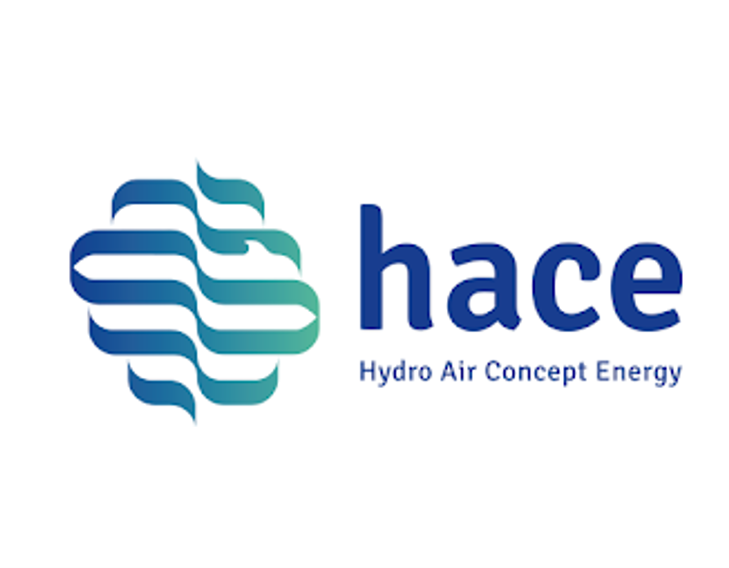
Hace
The startup technology intends to generate electricity by harnessing the power of ocean waves. It offers modular organization of wave power generators makes it possible to create wave power parks or to build coastal protection dikes that integrate energy production.

Big Moon
The startup created a tidal energy technology designed to harness tidal energy without negatively impacting the environment. The solution does not use any type of electrical component and does not attach equipment to the seafloor.
Interested in a startup landscape or in an insights report?
Please fill out our contact form so that we can get back to you very quickly with our product offer.
Want to subscribe to our 123Fab?
Fill out our form to receive the latest insights into your inbox.

EIT Health and Biogen are joining forces to launch ‘neurotechprize’ to advance promising technology solutions addressing Alzheimer’s Disease (AD) from around the globe.
Through the neurotechprize, they aim to accelerate the most promising solutions and technologies addressing the challenge of AD in Germany.
Aster Fab is thrilled to have supported Biogen and the neurotechlab in the design and organization of the prize.
**
4 AREAS OF FOCUS
EIT Health and Biogen have identified four areas of focus that could make a difference in the life of people diagnosed with AD:
1. Accelerating the diagnostic pathway
2. Improving disease monitoring
3. Easing burden on patients
4. Maintaining quality of life
**
THE PROGRAM
The program is aimed at health entrepreneurs in the neurotech space seeking support in the validation of their ideas and developing business goals in a supportive and enriching environment.
The program offers participants:
- A tailored three-month journey focused on your team’s objectives, established individually at the beginning of the program
- Intensive mentoring from top experts in business and science
- Access to industry stakeholders
- 10,000€ funding to support participation of founders and/or key team members in the journey
**
ADMISSION PROCESS
Shortlisted teams will be invited for an online interview directly by EIT Health staff and Biogen experts. The interviews will take place between 20-26 January 2022. Shortlisted teams will be able to book the time for the interview via link provided in the invitation.
The application score and the result of the online interview will be combined to draw up a list of teams selected to pitch live in front of the Jury.
Up to 15 shortlisted teams (Semi-Finalists) will be invited to pitch their solution in front of the Jury on February 1st, 2022 to secure their spot in the program. The Jury will select up-to 10 teams (Finalists) who will be invited to enter the program (Finalists).
**
THE PRIZE
The Jury will be able to award up-to two prizes:
- 1st Prize of 100,000€ for the winning solution
- 2nd Prize of 50,000€ for the runner-up
123Fab #64
1 topic, 2 key figures, 3 startups to draw inspiration from

Copper plays a major role in the global economy. From thermal and electrical conductivity to corrosion resistance, copper is an extremely versatile metal that has long contributed to the way the world works. By way of illustration, it is used in numerous industries such as telecommunications (cables, wires), electronics (printed circuits, chips), transportation (injection systems, braking circuits), construction (pipes, tubing), currency, etc. In fact, one tonne of copper brings functionality to 40 cars, powers 100,000 mobile phones, runs 400 computers and distributes electricity to 30 homes.
This year, the price of copper broke the $10,000 per ton mark for the first time in 10 years. This indicates an expected increase in global demand, which should benefit Chile, Peru and China (47% of global production). Described as the ‘new oil’, demand for copper has been driven in recent years by its vital role in a number of rapidly growing industries, such as electric vehicle batteries and semiconductor wiring. According to Citigroup Global Markets, demand related to renewable power generation, battery storage, electric vehicles, charging stations and related grid infrastructure accounts for about 20% of copper consumption. Thus, copper is lauded as an essential, structural metal for the energy transition. However, the recent price surge threatens to make decarbonization more costly. At the same time, the global average copper ore grade is expected to decrease, as mines with higher ore grades become exhausted. As a result, there is growing concern about the availability of copper, and several studies have sought to estimate the peak of global copper production using Hubbert’s model, which has been estimated to be between 8 and 40 years from now.
Given the importance of copper, innovation is beginning to spur in the industry. Continuous research and testing of new concepts are being deployed to make processes more efficient, minimize environmental impact, lower energy consumption and improve design. In 2015, Aurus III, a $65 million venture fund focused solely on copper mining innovation, was launched in Chile. Among the startups they have invested in are Ceibo (formerly known as Aguamarina), which focuses on soil stabilization through biomineralization, and Scarab Recovery Technologies, which is centered on recovering valuable materials from tailings. Recycling is also receiving increased interest because copper – like gold, silver and other non-ferrous metals – suffers no loss in quality from the process, making it infinitely repeatable. In addition, it requires up to 85% less energy than primary production. Hamburg-based Aurubis is one of the companies leading the charge on the recycling of copper and other metals by a pyrometallurgy method. This year it announced that it is investing €27 million in a new recycling plant at its Beerse country site. The ASPA plant will process anode sludge, a valuable intermediate product from the electrolytic refining of copper, from the recycling sites in Beerse and Lünen, Germany. New Zealand startup Mint Innovation, however, uses a unique biohydrometallurgy method. Launched in 2016, it has developed a low-cost biotech process to recover precious metals from e-waste. It raised NZ$20 million last year to build its first two biorefineries in Sydney, Australia and northwest England.
It should be noted, however, that the copper recycling business requires considerable financial resources, particularly in terms of working capital and cash flow. This is what led to the near bankruptcy and takeover of the French factory M.Lego, which employs 110 people. Likewise, while secondary production of refined copper has increased in volume and percentage, it is growing at a much slower rate than the waste stockpile. This is primarily due to the fact that the sectors with the highest recycling rates (construction and infrastructure) have their copper tied up for several decades due to the life of the structures built. In contrast, consumer goods, which have a shorter life span, are only recycled at rates between 25 and 40%
In short, copper is projected to be a critical metal in the coming years, with a vital role to play in the energy transition. The gradual depletion of its reserves and dependence on certain countries is driving companies to innovate in the field of recycling, in order to make it both more profitable and sustainable. However, the copper industry will need strong government support to stimulate innovation to avoid a gradual shortage that would contribute to a sharp increase in prices.
2 Key Figures
About 50% of the copper used in Europe comes from recycling
International Copper Study Group (ICSG)
Copper consumption is predicted to rise more than 40% by 2035 compared to 2018
European Copper Institute (2018)
3 startups to draw inspiration from
This week, we identified three startups that we can draw inspiration from: Mint Innovation, Sortera Alloys and Weeecycling.

Mint Innovation
The New-Zealand startup has scaled biological processes that recover valuable metals like copper from electronic waste and other residues. The company’s firm uses microbes to selectively and rapidly recover precious metals from various low concentration materials under environmentally benign conditions.

Sortera Alloys
The American startup has developed a sorting system designed to reuse metals recovered from end-of-life products. The company’s system sorts metal by its type and alloy composition through a combination of X-ray fluorescence and optical sensor fusion, artificial intelligence (AI) and machine learning image processing.

Weeecycling
The French startup WeeeCycling has set up a circular economy loop for recycling strategic metals. The company buys electrical and electronic scrap in the world and, via its Morphosis brand, manufactured products. The rare metals are then extracted through a thermal and electrochemical stage to be resold for reuse.
Interested in a startup landscape or in an insights report?
Please fill out our contact form so that we can get back to you very quickly with our product offer.
Want to subscribe to our 123Fab?
Fill out our form to receive the latest insights into your inbox.
